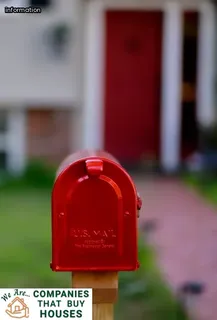Understanding Minnesota Quitclaim Deed Forms can seem daunting at first, but with a few simple steps, you can complete the necessary paperwork to successfully transfer ownership of your house. Before beginning, it is important to gather all of the necessary documents and ensure they are filled out correctly.
In addition, be sure to consult with an experienced attorney who is knowledgeable about real estate law in Minnesota if you have any questions or need advice. The Minnesota Quitclaim Deed Form must include the names of both the grantor and recipient, as well as the full legal address and a detailed description of the property being transferred.
It should also include the amount of consideration paid for the property (if applicable). Lastly, all signatures must be witnessed by two credible people over 18 years old, such as a family member or notary public.
Once everything is completed correctly and signed off on by all parties involved, you will have successfully completed your Minnesota Quit Claim Deed Form for your house.

Using a Minnesota Quitclaim Deed is the best way to transfer property rights from one person to another. This type of deed offers many advantages, including its ease of use, low cost, and quick processing time.
The process is simple, requiring only basic information about the grantor and grantee. No title search or formal survey is necessary since there are no warranties made as to the state of the title.
Since no litigation is involved, it saves time and money compared to other real estate transactions. Additionally, fees imposed by the state are typically lower than those associated with other types of deeds.
Finally, executing a Minnesota Quitclaim Deed eliminates any disputes that may arise regarding prior liens on the property or undiscovered encumbrances since title is simply transferred without investigation into its history.
Completing a Minnesota Quitclaim Deed is a relatively simple process; however, there are certain requirements that must be met in order for the deed to be legally valid. First, you must be the legal owner of the property in question.
Second, you need to have all necessary information about the current property owner and new owner available – this includes their full names, addresses and contact information. Third, you need to have the legal description of the property, which can usually be obtained from county records or your local assessor’s office.
Finally, both parties must sign and date the quitclaim deed form in front of a notary public or other authorized witness in order for it to be legally binding. Once these requirements are met, it is possible for you to complete a Minnesota Quitclaim Deed for your house with relative ease.

Completing a Minnesota Quit Claim Deed is an important step when transferring real estate property in the state. A quitclaim deed is a legal document that allows someone to transfer any interest they have in a property to another person.
It is not commonly used for residential properties, but it can be an effective way to transfer ownership with minimal effort and expense. When completing this type of deed, it’s important to understand the process and the information required by the State of Minnesota.
First, gather all information related to the transferor and transferee, including their addresses, phone numbers, and signatures. Next, prepare the deed using a standard form provided by Minnesota or a blank form available at most stationary stores or online.
Fill out all information related to the parties involved in the transaction as well as a description of the real estate being transferred. Then sign and notarize the document before filing with your local county recorder’s office.
After filing with the county recorder’s office, you can provide copies of this document along with other documents that may be needed for title insurance or other purposes. Once all paperwork is filed correctly, you will have successfully completed your Minnesota Quit Claim Deed for your house.
Establishing title in Minnesota with quitclaim deeds is an important part of transferring ownership of a property. In order to complete the task, you must fill out the Minnesota Quit Claim Deed document, which is officially provided by the Minnesota Department of Revenue.
The document is comprised of several sections, including grantor and grantee information, legal description of the property, and a notarized signature page. After completing all required fields on the form, the grantor must sign it in front of a notary public to ensure that it is legally valid.
It is advisable to also have two witnesses present when signing. Once ready, the deed must be filed with the state's county recorder office in order to become fully official and complete title transfer process.
Additionally, it is important to remember that quit claim deeds do not guarantee any warranties or clear titles; they merely transfer whatever rights are held by one party over to another.

Completing a Minnesota Quit Claim Deed for your house requires certain information to be valid. This includes the legal description of the property, names and addresses of all grantors and grantees, signature and notarization of all parties involved, an acknowledgment or certificate of consideration from a Minnesota Notary Public, and an acknowledgement by the grantor that they are delivering the deed without any warranties.
Additionally, it is important to include with the deed a proof of address for each party involved in order for it to be considered valid. All parties must also sign the deed in front of two witnesses who can both attest to their signatures being authentic.
With all this information included on a Minnesota Quit Claim Deed, it will be legally recognized as satisfactory by the state.
When completing a Minnesota Quit Claim Deed for your house, it is important to consider if the property has an existing mortgage. A mortgage is a legal document signed between a lender and borrower that uses the home as collateral.
In most cases, a quit claim deed will not extinguish any debt owed by the former owner to a third party, such as any outstanding mortgage on the home. It is essential to research and understand all applicable laws related to mortgages and quitclaim deeds before proceeding with either one.
Furthermore, it is important to note that lenders may require additional documentation or signatures in order for the deed to be legally valid in Minnesota. Additionally, if there are multiple mortgages on the property or multiple parties involved in ownership of the home, extra steps may need to be taken in order to successfully complete a Minnesota Quit Claim Deed.

Completing a Minnesota Quit Claim Deed for your house is an important part of the transfer of title process. To ensure that the deed is written correctly, there are certain tips to keep in mind when you craft it.
It is essential to include the legal name and address of all parties involved, as well as a full description of the property being transferred. Additionally, it is necessary to have a witness present when signing the document and be sure to have them sign with their full name and address included.
The Quit Claim Deed must also be notarized in order for it to be legally valid. Finally, make sure you fill out all required fields on the form correctly; otherwise, it can cause delays in getting your deed processed.
Following these tips while writing your Minnesota Quit Claim Deed will help ensure that you complete everything correctly and get your house transferred quickly.
Failing to file a Minnesota Quit Claim Deed for your house can have serious consequences, including the inability to transfer ownership of the property or to remove someone’s name from it. When submitting a deed in Minnesota, it must be recorded with the county recorder's office in order for it to be legally binding.
Without filing the quit claim deed, you could face issues if you ever want to transfer title of the property or if someone is listed on the deed that should not be. Additionally, when selling the home, failing to file a Quit Claim Deed may result in additional taxes being owed.
It is important to complete and properly file any Quit Claim Deed when transferring title or selling your house as this will ensure that you are following all legal requirements and avoiding any potential problems down the road.

Completing a Minnesota Quit Claim Deed for your house is not as complicated as it may seem. In order to successfully sign and notarize the Quit Claim Deed, there are several steps that must be taken.
First, you'll need to find an individual who is licensed to notarize documents in the state of Minnesota. After this has been accomplished, all parties involved should sign the deed in front of the notary.
In addition, each party should present a valid form of identification such as a driver's license or passport. Once all signatures have been acquired and all forms of identification have been presented, the notary will then verify and stamp the document.
Upon completion, the Quit Claim Deed has now been successfully signed and notarized.
When preparing and filing a Minnesota Quit Claim Deed, there are some common mistakes to be aware of. It is important to make sure that all parties have signed the documents and the deed is notarized.
The deed must also be submitted to the county register or recorder's office in order for it to be legally accepted. Another common mistake is not properly filling out the form.
All required information must be included such as the legal description of the property, names of all parties involved, and a signature from each party. Additionally, if there are any prior deeds or mortgages on the property, they must be released in order for the new deed to be valid.
Lastly, another mistake people often make is forgetting to pay applicable fees or taxes associated with transferring ownership of a property. If these fees and taxes are not paid, the quit claim deed cannot be filed and will not take effect until all costs have been settled.

Using a Minnesota Quit Claim Deed to transfer ownership of your house is a straightforward process, but it is important to consider the potential value of title insurance. Title insurance protects the new owner in case anyone with a prior claim to the property comes forward and challenges the deed.
Without title insurance, you could be held liable for any financial repercussions that may arise due to an unresolved dispute. This can include taxes, liens, or other outstanding payments connected to the home.
It is also possible that an unknown claim could emerge after closing which would not be covered by title insurance if purchased at a later date. Taking precautionary steps such as obtaining title insurance when completing a Minnesota Quit Claim Deed can ensure that you are properly protected against unexpected costs or liabilities related to your house.
Recording and submitting your Minnesota Quit Claim Deed after filing it is an important step in completing the process of transferring ownership of a property. Once you have completed the deed, which should include all necessary information such as the grantor and grantee's names, the legal description of the property, and any additional details, you will need to submit it to the county recorder for recording.
You may also be required to pay a recording fee when submitting your deed. After submitting your deed for recording, you will receive a copy of your deed with an official stamp from the county recorder that certifies it has been recorded.
This stamped copy must be submitted to the recipient or their attorney if they require it in order to complete the transfer of ownership. Once this is done, all parties involved should be able to refer back to your recorded Minnesota Quit Claim Deed at any time.

Preparing for the closing of your Minnesota Quit Claim Transaction requires some steps to ensure that everything is done correctly and legally. First, you'll need to make sure all necessary paperwork is completed.
This includes filling out a Minnesota Quit Claim deed, which must be signed by both parties involved in the transaction. You will also need to have a notary public witness the signatures on the deed.
Once you have all of these documents completed and signed, you will then need to file them with your local County Recorder's office, who will process the deed and register it with the state. To complete the closing process, you'll want to do a final walk-through of your home to make sure everything is in order before handing over ownership.
Additionally, if you are selling your house, you may want to obtain title insurance as an added layer of protection against any potential issues that could arise during or after the transaction.
In Minnesota, there are several different types of real estate transactions that can take place. One of the most common is a quit claim deed, which is used to transfer ownership from one person or party to another.
A quit claim deed is often used when transferring a house or other piece of property from an individual to another individual, such as in the case of a divorce or when gifting a home. This type of deed usually does not require any kind of title search or other formality and is relatively simple to complete.
It is important to understand the legal requirements for completing a quit claim deed in Minnesota before beginning the process; this includes making sure that all documents are properly filled out and signed by both parties, as well as ensuring that all applicable taxes have been paid. Additionally, it's important to have an understanding of the differences between a quit claim deed and other types of real estate transactions in order to make sure that you are protecting your rights and interests throughout the process.

When using a Minnesota Quit Claim Deed to transfer property ownership, it is important to consider the potential tax implications. Depending on the situation, there may be taxes due to federal, state or local governments.
In Minnesota, deeds are subject to the Real Estate Transfer Tax which is paid by the seller of the property. The amount of tax varies based on factors such as the county and type of property transferred and must be included in the deed.
Furthermore, if either party involved in a quit claim deed has a gain from the sale of real estate, they will be responsible for paying capital gains taxes to both federal and state governments. When completing a quit claim deed for your house in Minnesota it is important to research all relevant tax laws and regulations in order to ensure that all necessary filings and payments are made properly.
In Minnesota, the county recorder’s office holds records of real estate ownership. To determine ownership of real estate in MN, you can check the county's public records or request a title search report from a title company.
The title search report will include information on prior owners and the chain of title for the property. Once you have determined who owns the real estate, you can proceed to complete a Minnesota Quit Claim Deed for your house.
A quit claim deed is used to transfer ownership interest in specific forms of property such as land, buildings, or real estate. A Minnesota Quit Claim Deed should be signed by both parties and notarized by a Notary Public before it is recorded with the county recorder’s office to officially transfer ownership.

When completing a Minnesota Quit Claim Deed for your house, it is important to understand the forms that are typically used along with the document. The most important form is the deed itself, which must be completed in its entirety and filed with the local county recorder's office.
Additionally, you will need to include a title search of your property as part of the process. You may also be required to submit additional documents such as a Certificate of Real Estate Value (CRV), an Affidavit of Title or a Taxpayer Identification Number (TIN) depending on your individual situation.
It is essential to check with your local county recorder’s office so that you are aware of any additional forms that may need to be included in order to process your Quit Claim Deed correctly.
Whether you are trying to transfer property ownership or add a co-owner, a legal professional can help ensure that the Minnesota Quit Claim deed process is completed accurately and in accordance with state regulations.
A real estate attorney can guide you through the steps of preparing, executing and filing the necessary documents to properly complete the transfer.
Additionally, they can provide guidance on what legal requirements may need to be fulfilled for tax or title purposes as well as inform you about any restrictions for transferring ownership within the state of Minnesota.
With their experience and expertise in this area, an attorney can make sure all paperwork is completed correctly and filed with the appropriate courts in a timely manner.

When signing a Minnesota Quit Claim Deed for your house, it is important to ensure that you are properly protected. Start by gathering all the necessary documents and making sure they are signed and notarized.
Then review the deed carefully to make sure it is accurate and contains no errors. If there are any discrepancies or omissions, contact an attorney before signing the document.
It is also a good idea to have a witness present when signing the deed. Once everything is in order, make sure to keep a copy of the deed for your records.
To finalize the process, record the deed with the county register of deeds office in Minnesota where your property resides. Following these steps will help protect you when signing a Minnesota Quit Claim Deed for your house.
The cost of completing a Minnesota Quit Claim Deed for your house varies depending on the complexity of the transaction and the type of service you choose. Generally, you can expect to pay between $50 and $400 in filing fees, notary fees, and other associated costs.
Additionally, there may be other expenses such as document preparation fees or title insurance that could add to the overall cost. If you decide to hire an attorney to help with the process, legal fees and associated costs could increase significantly.
It is important to do your research and shop around before deciding which route is best for you.

Filing a Minnesota Quit Claim Deed for your house is an important step to take if you are transferring ownership of the property. Understanding what a quitclaim deed is and how to properly complete one is essential for ensuring that you follow all the necessary steps for filing in Minnesota.
A quitclaim deed is a legal document used to transfer ownership of real estate from one person (the grantor) to another (the grantee). To file a quitclaim deed in Minnesota, the grantor must first complete the form with the appropriate information, including the names and addresses of both parties, as well as a full legal description of the property.
The document also requires two witnesses to sign and date it in order for it to be valid. After completing this form, it should be filed with the county recorder's office along with any other required documents, such as an Affidavit of Value or Certificate of Real Estate Value.
Once all the paperwork has been submitted and approved by the county recorder's office, the new owner can assume possession of the property. Filing a quitclaim deed in Minnesota is an important process that ensures that all parties involved have proof of ownership and can rest assured that their rights are protected.
In Minnesota, adding someone to a deed can be done with a Quit Claim Deed. This type of deed is used in Minnesota to transfer ownership or remove an owner from the property title.
To complete a Quit Claim Deed for your house, you must first obtain the blank form from the county recorder’s office in which the property is located. Once you have the form, you must fill out all of the necessary information, including the names and addresses of both parties involved in the transfer, as well as a description of the property being transferred.
After filling out all of this information, both parties must sign and date the document before submitting it to the county recorder's office for filing. The new owner will then be added to your house title and legally become part of its ownership.
In Minnesota, there are specific requirements that must be met in order for a quit claim deed for your house to be valid. Generally, the grantor must provide an accurate legal description of the property, their name and address, the grantee's name, the consideration amount being paid or given for the transfer of property, and a notarized signature.
In addition to these basic requirements, a warranty deed in Minnesota must also include a statement of title covenant by which the grantor warrants good and clear title to the property. The language of this statement should include words such as “grantor has full power and lawful right to convey” or “grantor will defend against all claims” by third parties.
Furthermore, Minnesota law requires that evidence of payment of all taxes associated with the sale be presented at closing. Finally, any additional agreements between parties must be included in order for the warranty deed to be legally enforceable in Minnesota courts.